I Fly
- Get link
- X
- Other Apps
I Fly




Five (5) Ways To Make Learning to Fly More Affordable
IT'S NOT OUT OF REACH.
Getting Started In...Flying
Make Me Want to Do This Easy. Take a ride. Most flight schools and small aviation companies will charge you no more than a couple of hundred dollars for a taste-usually an hour ride, with an instructor. You get to grab the controls for part of the time, zip around, maybe fly over your house.

Instrument Panel -- Cessna 152
The Cessna 152 hasn't been in production since 1985,
but still remains a popular -- and safe -- training aircraft.
Will I Fly an old plane?
Cessna 175 Skylark
Over 40K trusty 172s have been built -- more than any other plane.
Piper PA-28 Cherokee
Makes an appearance in Goldfinger.
Not just for bond Villains.
Diamond DA42
First diesel-powered fixed-wing craft
to cross the Atlantic Nonstop.
Maybe you've always wanted to be a pilot, but heard that you needs tons of cash to do it. Well, that's not entirely true. Yes, learning to fly takes money, but if you're smart, it can be accomplished on a budget that's more akin to what an avid golfer spends on tee time than some absolutely out-of-reach pastime for the super rich.
I earned my pilot's certificate as a teenager more than 18 years ago, ultimately leading to a career in aviation. Here are five tips to help keep your flight-learning costs from soaring higher than a Cessna.
Skip Flight School
It's a common mantra in aviation that the only way to learn to fly is to go to flight school. While a large flight school may offer a standardized curriculum and potentially lower rates, there are disadvantages, too.
With massive defunding of the military in the last decade, airlines are looking elsewhere for pilots to fill their increasing cockpit vacancies. This has put flight schools into the big business of manufacturing career airline pilot. Recent federal regulations also require new airline pilots to have substantially more flying experience. This trend isn't great for anybody who just wants to learn to fly recreationally, though, and doesn't need to rack up all the hours that potential airline pilots need.
Finding a freelance flight instructor will can more individualized training at a lower price. A dedicated flight instructor will not be held to a strict training outline and will be flexible to your learning abilities and budget. And an independent instructor will typically teach you in any aircraft you choose.
It may require some legwork to locate a qualified trainer near you. Checking your local airport office for classifieds is a great way to connect with an independent instructor. Many airports also offer a community open-house or pancake breakfast to encourage interest in flying. Also, aviation is a pretty tight community. If you happen to know a pilot, chances are they can recommend someone great.
Do Some Studying on Your Own
A lot of flight training happens on the ground. In fact, at the conclusion of your training you'll be tested in three phases, and only one of those will demonstrate your flying capabilities. The other two consist of a multiple-choice written test and an oral exam conducted by either an FAA official or a designated pilot examiner.
While we've absorbed the rules of the road since we were kids, riding around and watching our parents drive, flying concepts are much more foreign to any new student. To learn how to fly an aircraft requires an extraordinary amount of book knowledge.
The most popular (and expensive) way is to pay a personal flight instructor. But unless your note-taking is superb, much of the teaching is impossible to use for review and study later. Plus, you're paying a professional pilot for hourly lessons.
You can also try a weekend ground school. This is typically a lecture class taught by an instructor over several days. The ground school is a more expensive option but only focuses on the written exam. It can also be less personal and may not cover personal gaps in knowledge.
A third option is a self-study course that involves some textbooks and informal training material, or an online ground school that can be reviewed multiple times. Many aviation education companies offer an all-in-one solution for online knowledge training and some even guarantee you'll pass all three portions of your flight test or you get a full refund.
Go With a Sport Pilot Certificate
The Sport Pilot certificate was created in 2004 to offer an affordable entry into aviation. Compared to the typical Private Pilot certificate, applicants receive the same privileges but are restricted to a lighter two-seat aircraft. The flight hour requirement is also cut to only 20 hours, and a Sport Pilot can still make flights across the county but only during the day.
Though these airplanes are generally smaller than the traditional training aircraft of the past half century, they travel at comparable speeds, carry similar amount of cargo, and generally burn much less fuel. The efficient fuel burn and typically lower operating cost also translate to cheaper rentals. And since the Sport Pilot category is barely a decade old, you won't be training in an old Cessna held together by duct tape and good intentions.
Get Serious
Although you may be tempted to pack your flight training into the weekends, the weeklong sabbaticals in between can wreak havoc on your learning retention. Over the many hours needed to earn a pilot certificate, added time for review adds up to a costly redundancy that could be avoided by a persistent training schedule.
A dedicated two, three, or even four weeks of open schedule will create an enormous cost savings. This may be the most difficult but potentially best money-saving tip out there. Even taking unpaid vacation time from your career has the opportunity to save you more on your training than what you would lose in wages.
Buy Your Own Plane
Okay, hear me out. Let's say you've got enough cash to consider buying a plane for training purposes. There's a good chance you could save cash this way.
With new aircraft prices soaring, the used market is strong and you can find great deals. With resale values holding steady, you can accurately calculate the expected depreciation of a plane and sell it for nearly what you paid for it once you finish flight training. You also buy your own fuel instead of paying the bundled hourly rate. Other costs—like hangar or storage fees and insurance—are predictable, and a total of all expenses needed to complete your training should allow for a very accurate budget. Compare this price to what the hourly rate your local airplane rental will charge and there's a good chance you'll see several thousand dollars in savings.
Of course, there are risks. Maintenance could throw off your budget, and unforeseen aircraft market changes could affect your resale. You also may not have tens of thousands of dollars stashed away. Not too many mega banks offers aircraft financing, either.
If buying your own aircraft isn't possible, maybe it's time to find some friends to share those costs. Flying clubs are a popular option for making aircraft ownership possible with an upfront fee that buys you a portion of one or multiple aircraft. Monthly dues go toward maintenance, insurance, and hangar fees. These clubs can be as informal as a small group of pilots who each split duties for keeping the club running or an organization with a small fleet of airplanes and many members. If you chose this route, just be sure to verify the penalties in the event you decide to sell your share and leave the club.
Really, the one thing an aspiring pilot needs above all else is dedication, both when researching cost options or studying for a pilot's license. If you have that, learning to fly is remarkably within reach.
So You Want to Learn to Fly? Here’s How I Got Started
The Cirrus SR22 is equipped with a Cirrus Airframe Parachute Systems. In the unlikely event of an emergency, you'll pull a red lever or handle hanging from the ceiling of the cockpit and a 65' diameter canopy unfurls, controlling the descent. Not that you'll need it, mind you.
I've worked for Boeing for many years. So you could imagine, shortly after my 30th birthday in April, I decided to get my toes wet by fulfilling a long-time dream of mine: learning to fly. Besides being obsessed with aviation and all things travel to begin with, I also just so happened to live in vicinity of a dozen airports and flight-training schools. I had all the tools in front of me and still made every excuse to do it “some day.”
“Some day” finally came when I found a LivingSocial deal for a two-hour introductory flight lesson, which included one full hour of flying for $235 at a small airport only a few miles from home. Truthfully, the one thing that always made me put off pursuing the flying lessons to begin with was the commitment involved — in terms of finances and, of course, time and dedication. I wouldn’t want to waste anyone’s time before knowing if I would even enjoy flying to begin with.
The Introductory Flight Lesson
After four or five weather and wind-related reschedules, I finally had my lesson. I started off with a one-hour ground briefing, which covered aircraft pre-flight inspection, cockpit control familiarization and basic in-flight aircraft control. The hour zipped by and soon it was time for me to pilot a Cessna 172 G1000.
I fly! Was I really going to fly a plane after just one hour of instruction? What about time practicing in a simulator? (Come on, not even five minutes?) My adrenaline was pumping and I was both nervous and stoked, but relieved to know that I had a pilot with me to save the day — and to help me take off and land.
Once the plane was in my control, to say the feeling of flying is incredible is an understatement. It was simply a magical, invigorating experience from start to finish. After a few shaky minutes on my own, I felt at ease and got the hang of it. We kept a cruising altitude of 2,500 feet knowing that the big commercial jets would be coming in low around 3,000 feet as they made their decent into surrounding airports (specifically EWR, LGA and JFK). From an aviation geek’s perspective, it was so awesome to essentially “plane spot” from the sky!
My pilot Dave was pleasantly surprised by how comfortable I became, so he decided to have fun by showing me what a G1, G2 — and ultimately a G0 — felt like. Luckily, I’m a bit of an adrenaline junkie, and it was an awesome treat.
Before I knew it, it was time to start heading back to the runway and we were safely on the ground in no time. The experience definitely piqued my interest to pursue more training and to obtain pilot certification. While I don’t have any immediate plans to jump into a career of piloting, pursuing a passion and learning a new skills is a fun way to keep life fresh.
What It Takes to Get a Pilot License
Introductory flight lessons allow aspiring aviators to have a firsthand experience of flying an airplane. It still amazes me that from the moment you strap yourself into the seat and get ready to take off, the dream of flying truly becomes a realty.
During a typical first lesson, you’ll ride with a certified flight instructor will who conduct the take-off and landing (phew), but once airborne, it’s typically all on you. During my lesson, as soon as we hit an altitude of 800 feet, the plane was in my hands and it was my job to keep the plane straight and level and make turns, climbs and descents. I also learned that generally, by lesson three or four, you can take off on your own and by lesson 20, you can “attempt” a landing.
To obtain a private pilot certificate in the United States, you must be at least 17 years old and complete 35 flight hours in an FAA part 141-approved school, at minimum. A non-approved school will require 40 hours; however, from a national average standpoint, the typical student pilot tends to complete about 70 hours of training, regardless of the type of school, to earn a private-pilot license.
As with any type of training, the more you put into it, the faster you will complete your goal. In addition to the hours in the plane, you’ll be required to pass the FAA private pilot written examination — a 60-question multiple choice test — and a check-ride with an FAA or FAA Designated Examiner. There are also physical health requirements, too. If you’re under 40, you must pass a third-class medical exam with an FAA-approved doctor every five years; those who are over 40 must pass every two years.
Bottom Line
Sometimes fulfilling your passions starts with the smallest step. It was great that I was able to buy a LivingSocial deal that had me flying an airplane in an hour, giving me a taste of what it would be like to continue learning — without making a huge commitment. It’s smart to take a trial run before investing the thousands of dollars required for training to obtain your pilot license.
A DREAM AND A CESSNA 152
The most popular flight training aircraft is the Cessna 152. Conre Jon Silva was seven years old in 1977 when his father Coen started flying a Cessna 182 at Flight Training Services at Grand Central Airport. Coen later converted to the Beechcraft Bonanza and as would be expected young Conre was a regular passenger.

Conre finished school and enrolled at a local flying school where he had just slightly more than 5 hours instruction before enrolling at Progress Flight Academy where on 7 April 1990 he had his first lesson in a Cessna 172 before moving up to the Piper Warrior. Fifteen hours later on the 16 May 1990 Mike v/d Berg send him solo and on the 2 November he got his wings and twenty eight days later on the 30 November his night rating.
Whilst studying for his Commercial License Conre flew a 172 and did a conversion to the Bonanza in which his father has a share as well as the Piper Warrior and Cessna 152 II which they bought in September 1991 and that he and Lex Erasmus fetched from Stellenbosch.

Their 152 II, serial 83104, build in 1977 for the 1978 model year was one of the first to leave the production line. In February 1990 and still a resident of the USA registered as N46790 and with a total time of 6305 hours she was removed from service. In 1990 she found herself in South Africa at Stellair, Stellenbosch where John and Stephen Barry did a complete strip down and rebuild which included an overhauled engine, new windows and windscreen as well as a complete re-paint.

On 18 October 1991 Conre passed his Com subjects an on 18 May 1992 got his license flying his father's Bonanza. By then he was type rated on the 152,172, 182, 210, 206, Warrior, Arrow and Bonanza. Conre now fly commercially in Africa.
In April 1991 with Claus Keuchel who used to instruct in the then East African Federation and has 740 instructional hours in the right seat they flew the 152 to the annual EAA Convention held in Margate. The flight down was uneventful until they reached the escarpment where they and others that also made the journey encountered severe turbulence. Claus got of worse with cuts and bruises and just before Glendale, where they landed they had a strong tailwind, the GPS at one stage showing a ground speed of 140 knots. Coen, who flew down in the Bonnie recorded a ground speed of 190 knots. The little Cessna 152 which was the 152 was a modernization of the proven Cessna 150 was planned to compete with the new Beechcraft Skipper and Piper Tomahawk, both of which were introduced the same year behaved impeccably though.

The 152's airframe is an all-metal construction. The metal skin of the aircraft is riveted, which allows loads to be spread out over the structure and all models constructed between 1977 and 1982 is powered by the Lycoming O-235-L2C engine producing 110 hp (82 kW) at 2550 rpm.
Production of the 152 was ended in 1985 when Cessna ceased production of all of their light aircraft; by that time, a total of 7,584 examples of the 152, including A152 and FA152 Aerobat aerobatic variants, had been built worldwide. Besides its popularity in general aviation the 152 also found a home in the Air Forces of Botswana and Gabon as well as in Lesotho where one served with the Police Mobile Unit. The little Cessna also has the unenviable honour of being the only aircraft in history to be shot down by a Hellfire missile when Estephan Nicolian, a Lebanese student pilot was shot down by a Israeli AH-64 after ignoring repeated warnings by Israeli ATC that he was violating Israeli airspace.

Conre however was well rewarded for making the trip to the EAA's most prestigious and popular event by receiving the award for the youngest pilot to fly down. The little Cessna has now been sold and there is no doubt that her new owner will have many pleasurable hours in her.
Many thanks to Brian Appleton for flying the camera ship and to Brian Stableford for taking the right hand seat in the 152 during the photo shoot.

Performance
Maximum speed: 126 mph (110 knots, 204 km/h)
Cruise speed: 123 mph (107 knots, 198 km/h)
Stall speed: 49 mph (43 knots, 79 km/h) unpowered, flaps down
Range: 477 mi (414 nm, 768 km)
Service ceiling: 14,700 ft (4,480 m)
Takeoff roll: 725 ft (221 m)
Rate of climb: 715 ft/min (3.6 m/s)
Max. wing loading: 10.44 lb/ft² (51 kg/m²)
Conre finished school and enrolled at a local flying school where he had just slightly more than 5 hours instruction before enrolling at Progress Flight Academy where on 7 April 1990 he had his first lesson in a Cessna 172 before moving up to the Piper Warrior. Fifteen hours later on the 16 May 1990 Mike v/d Berg send him solo and on the 2 November he got his wings and twenty eight days later on the 30 November his night rating.
Whilst studying for his Commercial License Conre flew a 172 and did a conversion to the Bonanza in which his father has a share as well as the Piper Warrior and Cessna 152 II which they bought in September 1991 and that he and Lex Erasmus fetched from Stellenbosch.
Their 152 II, serial 83104, build in 1977 for the 1978 model year was one of the first to leave the production line. In February 1990 and still a resident of the USA registered as N46790 and with a total time of 6305 hours she was removed from service. In 1990 she found herself in South Africa at Stellair, Stellenbosch where John and Stephen Barry did a complete strip down and rebuild which included an overhauled engine, new windows and windscreen as well as a complete re-paint.
On 18 October 1991 Conre passed his Com subjects an on 18 May 1992 got his license flying his father's Bonanza. By then he was type rated on the 152,172, 182, 210, 206, Warrior, Arrow and Bonanza. Conre now fly commercially in Africa.
In April 1991 with Claus Keuchel who used to instruct in the then East African Federation and has 740 instructional hours in the right seat they flew the 152 to the annual EAA Convention held in Margate. The flight down was uneventful until they reached the escarpment where they and others that also made the journey encountered severe turbulence. Claus got of worse with cuts and bruises and just before Glendale, where they landed they had a strong tailwind, the GPS at one stage showing a ground speed of 140 knots. Coen, who flew down in the Bonnie recorded a ground speed of 190 knots. The little Cessna 152 which was the 152 was a modernization of the proven Cessna 150 was planned to compete with the new Beechcraft Skipper and Piper Tomahawk, both of which were introduced the same year behaved impeccably though.
The 152's airframe is an all-metal construction. The metal skin of the aircraft is riveted, which allows loads to be spread out over the structure and all models constructed between 1977 and 1982 is powered by the Lycoming O-235-L2C engine producing 110 hp (82 kW) at 2550 rpm.
Production of the 152 was ended in 1985 when Cessna ceased production of all of their light aircraft; by that time, a total of 7,584 examples of the 152, including A152 and FA152 Aerobat aerobatic variants, had been built worldwide. Besides its popularity in general aviation the 152 also found a home in the Air Forces of Botswana and Gabon as well as in Lesotho where one served with the Police Mobile Unit. The little Cessna also has the unenviable honour of being the only aircraft in history to be shot down by a Hellfire missile when Estephan Nicolian, a Lebanese student pilot was shot down by a Israeli AH-64 after ignoring repeated warnings by Israeli ATC that he was violating Israeli airspace.
Conre however was well rewarded for making the trip to the EAA's most prestigious and popular event by receiving the award for the youngest pilot to fly down. The little Cessna has now been sold and there is no doubt that her new owner will have many pleasurable hours in her.
Many thanks to Brian Appleton for flying the camera ship and to Brian Stableford for taking the right hand seat in the 152 during the photo shoot.
Performance
Maximum speed: 126 mph (110 knots, 204 km/h)
Cruise speed: 123 mph (107 knots, 198 km/h)
Stall speed: 49 mph (43 knots, 79 km/h) unpowered, flaps down
Range: 477 mi (414 nm, 768 km)
Service ceiling: 14,700 ft (4,480 m)
Takeoff roll: 725 ft (221 m)
Rate of climb: 715 ft/min (3.6 m/s)
Max. wing loading: 10.44 lb/ft² (51 kg/m²)
Get Started. Flying for Career ... of flight instructing, rental checkouts, and sightseeing flights when I spotted something odd-looking just inside the hangar door.
Getting Started With Simulation - PilotWorkshops
https://pilotworkshop.com/products/getting-started-with-simulation/
If you have thought about using home-based flight simulation to sharpen your skills, maintain proficiency, or maybe just have some fun, you aren't alone.
1 answer
Sep 1, 2016 - From there, you might like to start with a "trial flight" - typically 30-45 minute flightwhere you get to take controls and get a feel for piloting an ...- Get link
- X
- Other Apps
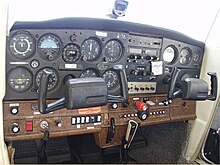



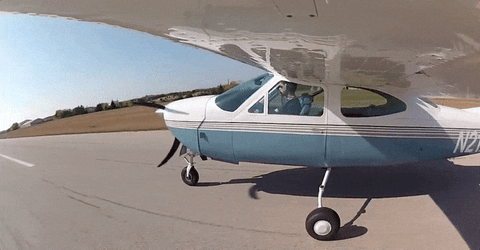
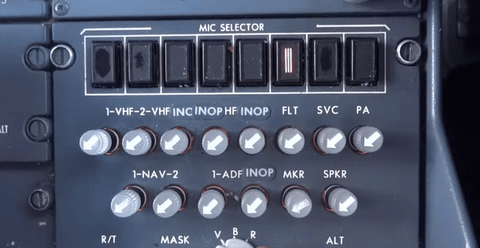
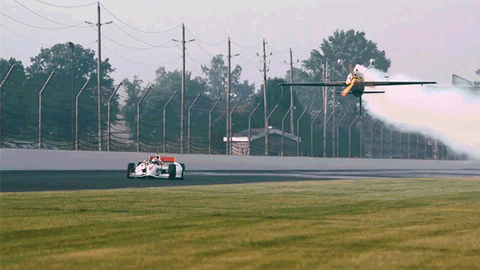
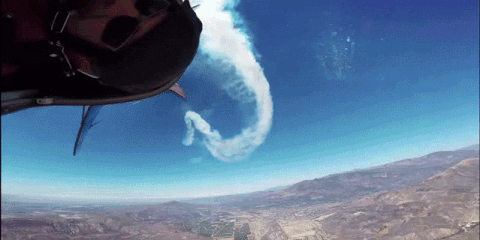

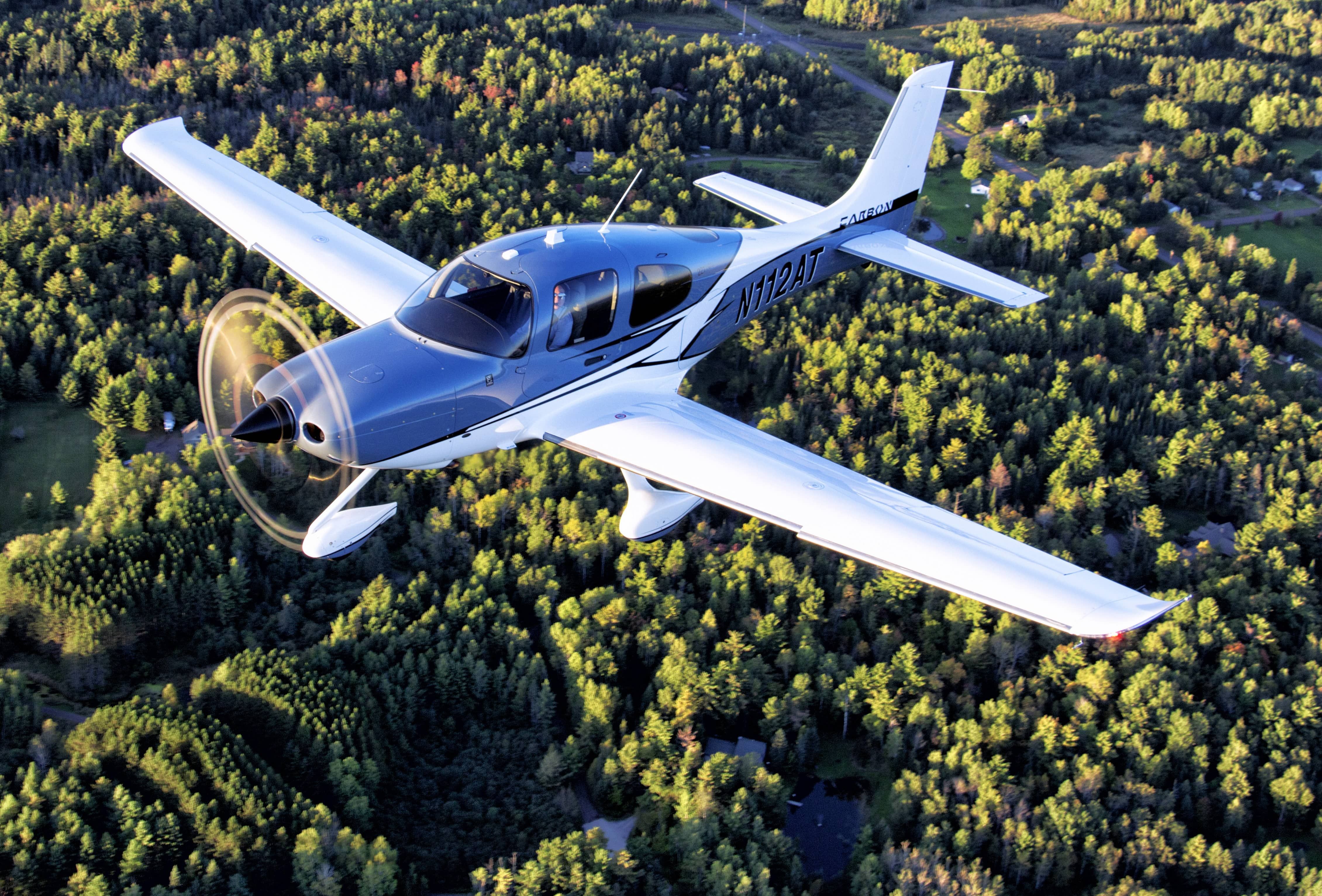



pg
ReplyDeletehttps://pgslot-games.co/
ReplyDelete